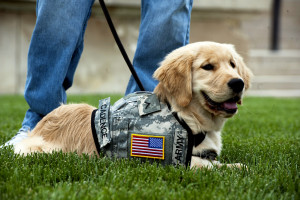 Service animals—almost always dogs—literally open doors for their disabled owners, as well as turning out the lights as they leave. Service dogs’ training varies with the kind of disability they will be helping with, and they can physically help their person with stairs and balance, bring medicine and water, provide assistance in emergencies and when the person is unresponsive, wake their human, protect them from strangers and help them ward off seizures.
Service animals—almost always dogs—literally open doors for their disabled owners, as well as turning out the lights as they leave. Service dogs’ training varies with the kind of disability they will be helping with, and they can physically help their person with stairs and balance, bring medicine and water, provide assistance in emergencies and when the person is unresponsive, wake their human, protect them from strangers and help them ward off seizures.
But they can’t do everything. And one of the things they cannot do is tell another human there is a problem andthat their human needs more help than the dog can provide.
Melody Moore Jackson is the head of Facilitating Interactions for Dogs with Occupations (FIDO) at Georgia Tech, and she and the folks at Canine Companions for Independence, who have been training service dogs since 1975, think that the solution could be in training the dogs to use wearable technology.
“Medical alert dogs can tell their owner is going to have an epileptic seizure 30 minutes before it happens,” Jackson told Federal Times. “They’re trained to back the person up against a wall so they don’t fall and lick their face to keep them conscious. But what if they could also pull a tab to send a message to the person’s husband, and use a touch screen to call 911 and send their message position via GPS?”
This is the wearables part: Jackson and her team are working on a service dog vest that might have such a tab as well as other features that would allow the dog to get human help, such as a pre-recorded message that says something like, “My owner needs your help.” They are also working on explanatory messages for the dog to give the owner.
The technology is not yet available to the public, but 15 dogs have already been trained to use the technology. “The first dog we trained took 27 seconds,” Jackson said. “The longest took 27 minutes. They get it.”